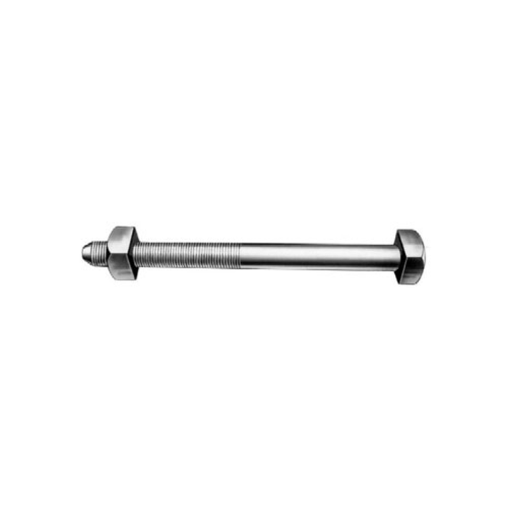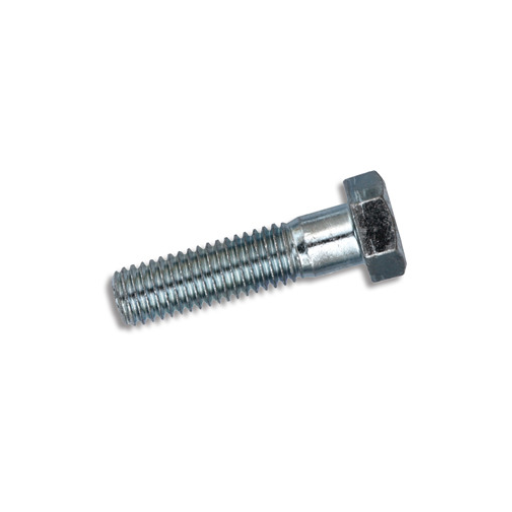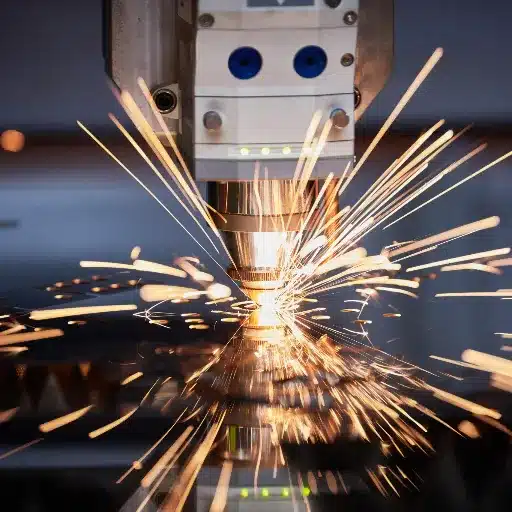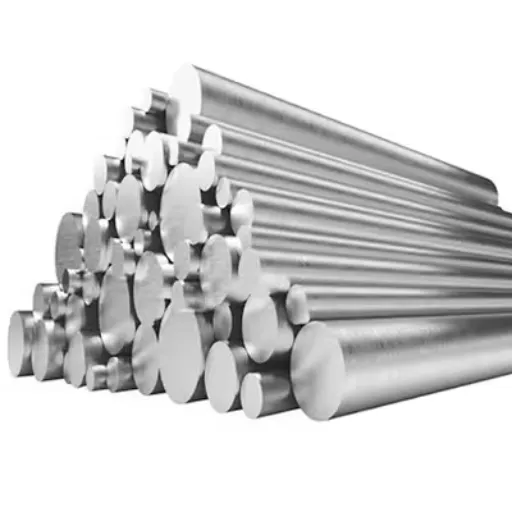Although it is well known that galvanized steel is durable and corrosion resistant, not all products use the same quality steel. Hot dip galvanizing and electro galvanizing are two popular methods of galvanization. They are very different but equally popular because they fulfill various needs. Also, these differences may help you determine what suits your requirements. In addition to exploring these techniques, we will study the advantages they offer and discuss the most critical factors to make the right decision. Whether construction, automotive, or any other industry, this guide will provide the necessary insights to aid in smart decision-making.
What is Hot Dip Galvanization?

The hot dip galvanization process helps prevent corrosion of Iron or steel by encasing it in a protective layer of zinc. The protective coat of zinc is formed by submerging the metal into a vat of molten zinc, which takes zinc ions from the surrounding zinc to bond on the surface, rendering a durable coat resistant to rust. Coating steel in this manner is very popular because it increases the durability of the steel and strengthens it in harsh weather conditions.
How Does Hot Dip Work?
Hot dip galvanization performs a sequence of steps to achieve and maintain a strong, uniform zinc coating that protects steel or iron from corrosion. The process consists of the following stages:
- The Surface Preparation phase includes putting through a pre-treatment. The pre-treatment includes removing all impurities such as dirt, grease, and rust through cleaning, pickling in an acidic solution, and rinsing. It is important that the surface is cleanable to facilitate optimal bonding.
- Fluxing: After cleaning is completed, the metal is dipped in a flux solution containing zinc ammonium chloride. This step mitigates oxidation before entering the molten zinc dip.
- Galvanizing: The prepared metal is immersed in a molten zinc bath maintained at a temperature not lower than 840°F (450°C). Zinc reacts with the metal surface afterwards to form a bonded metallurgical layer with a series of zinc-iron alloy layers underneath and an outer coating of pure zinc.
- Post the zinc dip, the coated metal is either air or water cooled and inspected to ensure complete coverage, uniformity, and desired thickness of zinc layer.
Data on Durability and Effectiveness
Whatever the case, research proves that hot dip galvanization is one of the most efficient methods for protecting steel structures. For the latter, the zinc coating can be expected to persist for 35 to 50 years in rural settings and 20 to 25 years in urban or coastal environments where moisture and pollutant exposure are elevated. Studies prove that galvanized coatings offer paints or other finishes much greater protection, with the rate of zinc corrosion, under average weather conditions, being around one μm to unprotected steel per year, which is significantly slower than the rate for steel.
The enduring nature of hot dip galvanization is matched only by its cost efficiency. The initial expenditure, in combination with maintenance costs over time, is comparatively low compared with other forms of corrosion protection. It complies with sustainability principles since zinc is one of the most recyclable metals, providing an ecological advantage for infrastructural projects.
Benefits of Hot Dip Galvanized Steel
| Key Benefit | Description |
|---|---|
| Corrosion Resistance | Protects steel with zinc barrier and patina. |
| Durability | Highly resistant to abrasion and impact. |
| Longevity | Can last over 50 years in most environments. |
| Complete Coverage | Uniform coating, even on edges and corners. |
| Low Maintenance | Requires minimal upkeep, saving time and costs. |
| Cost-Effective | Lower initial and lifecycle costs compared to alternatives. |
| Fast Application | Coating process is quick and weather-independent. |
| Environmentally Friendly | Sustainable, recyclable, and reduces carbon emissions. |
| Ease of Inspection | Coating condition easily assessed visually or with simple tests. |
| Versatility | Suitable for various shapes, sizes, and industries. |
Applications of Hot Dip Galvanized Products
| Sector | Applications |
|---|---|
| Construction | Beams, columns, rebar, railings, scaffolding |
| Energy | Utility poles, transmission towers, pipeline supports |
| Transportation | Bridges, guardrails, railway tracks, signals |
| Agriculture | Livestock fencing, barn structures, equipment frames |
| Telecommunication | Steel towers, fastened with galvanized bolts and nuts |
| Infrastructure | Highways, railways, streetlights, safety barriers |
| Manufacturing | Machinery, equipment frames, storage solutions |
| Water Storage | Pressed steel tanks for fire protection, domestic water systems |
| Oil and Gas | Offshore platforms, pipelines, structural supports |
| Mining | Equipment, structural components |
| Public Spaces | Playground equipment, garden furniture, decorative streetlights |
How Does Electro Galvanization Differ?

The application procedures and coating traits of electro-galvanization and hot-dip galvanization differ fundamentally. In contrast to hot dip galvanization, which dips the steel into zinc, an electrochemical process applies a zinc layer to the steel surface with electricity in electro-galvanization. As a result, a more uniform coating and smoother surface finish is obtained. However, this process provides less corrosion resistance than hot-dip galvanization since the electroplated zinc is more likely to be thinner. Electro galvanization is preferred when the appearance of the surface is more important than the surface features, for example, in automotive parts and consumer goods that utilize galvanized steel.
The Process of Electro Galvanizing
Electrogalvanization is the process of putting an electric current through an electrolyte solution containing steel, which results in the deposition of zinc on the surface of the steel.
Advantages of Electro Galvanized Steel
| Parameter | Advantage |
|---|---|
| Corrosion Resistance | High resistance to rust and environmental damage |
| Surface Finish | Smooth, uniform, and aesthetically pleasing |
| Precision | Consistent coating thickness for uniform protection |
| Lightweight | Thin zinc layer reduces weight without strength loss |
| Weldability | Easy to weld and form into complex shapes |
| Durability | Long-lasting with minimal maintenance |
| Cost Efficiency | Reduces the need for additional coatings or treatments |
| Environmental Impact | Minimal waste and recyclable zinc materials |
| Versatility | Suitable for automotive, construction, and appliances |
Common Uses for Electrogalvanized Steel
Electro-galvanized steel is regularly utilized in businesses that require precision and careful detailing. In the automotive industry, it is used to manufacture panels and brackets that need a smooth finish. I have also seen it used in appliances, office furniture, electronics, and other parts around the home, all of which require a certain level of surface quality and protection against rust.
Comparing Hot Dip vs Electro Galvanized Steel

Different methods of coating the steel distinguish hot-dip galvanized steel from electro-galvanized steel. For hot dip galvanization, the desired pole of the steel is dipped into molten zinc, forming a thicker layer of coating that increases the strength of the steel. Hot-dip galvanized steel is better suited for heavy-duty uses like construction and outdoor applications because it has a much higher corrosion resistance. In contrast, electro-galvanized steel is prepared by coating the steel with zinc using an electrolytic method, which results in a much smoother and thinner layer. This plating makes it more appropriate for visible items, like car parts, home appliances, and more. There is no doubt that hot dip is preferred for its strength and durability. However, electro-galvanized steel has the upper hand for operations demanding a smooth surface.
Differences Between Hot Dip and Electro Galvanizing
| Parameter | Hot Dip Galvanizing | Electro Galvanizing |
|---|---|---|
| Process | Dipped in molten zinc | Electroplating in zinc solution |
| Coating Thickness | Thick (80-100 µm) | Thin (10-12 µm) |
| Appearance | Dull, uneven, rough | Smooth, shiny, uniform |
| Durability | Long-lasting, decades of protection | Shorter lifespan |
| Cost | Cheaper for mass production | Higher for specialized applications |
| Applications | Structural steel, outdoor use | Small parts, cosmetic finishes |
| Corrosion Resistance | High, suitable for harsh environments | Moderate, less resistant |
| Finish | Not suitable for tight tolerances | Ideal for tight tolerances |
| Common Uses | Bridges, scaffolding, pipelines | Automotive parts, wires, appliances |
Which is Better for Corrosion Resistance?
While evaluating corrosion resistance, hot-dip galvanizing is generally better than electrogalvanized steel because of its thicker zinc layer. The hot dip process results in a strong coating of about 70-100 microns, which is better suited for harsh conditions compared to electrogalvanized steel, which has a thinner zinc coating of approximately 10-12 microns, making it more vulnerable to corrosion in aggressive, moist environments.
Recent research has corroborated this difference. For instance, hot-dip galvanized steel outperforms its counterparts in measuring corrosion durability using salt spray tests by enduring corrosion for about 1000 hours without considerable damage. On the other hand, depending on the thickness of the coating and environmental conditions, electrogalvanized steel starts showing rust at about 300-500 hours.
Despite hot dip galvanizing enduring harsh industrial and marine conditions, hydro galvanized steel remains a viable choice for indoors or areas with low exposure to moisture and chemicals. As noted earlier, the choice is dictated by the application, the environment, and the steel’s challenges during its lifetime.
Cost Differences Between Two Types of Galvanized Steel
| Parameter | Hot Dip Galvanized Steel | Electro Galvanized Steel |
|---|---|---|
| Cost | Higher, due to a thicker zinc coating | A lower, thinner zinc layer reduces cost |
| Production Process | More complex, involves molten zinc dipping | Simpler, uses electroplating |
| Durability Value | Long-term value for outdoor applications | Cost-effective for indoor use |
| Mass Production | Economical for large-scale production | Suitable for specialized applications |
| Price Ratio | Approximately 5 times more expensive | Cheaper alternative |
Why Choose Hot Dip Galvanized or Electro Galvanized Steel?

Hot-dip galvanized steels are suggested for applications needing heavy resistance to corrosion owing to their durability and thick zinc coating, especially in outdoor environments and heavily industrialized regions.
Electro-galvanized steel is more suitable for use indoors or in areas where moisture contact is minimal. Its smoother finish makes it ideal for applications where aesthetic appeal and accuracy are essential.
This selection fits specific performance requirements and the surrounding environmental conditions of the project.
Factors to Consider When Selecting Galvanized Steel
Please find below five factors that are pointed out numerate. Make sure to evaluate all of them while selecting galvanized steel, as they will ensure optimal performance and increased longevity for your project.
- Environmental Conditions
Consider the environment domain area or factors_ the project is being worked on. For projects concerning the outdoors, especially coastal terrains having salt water, humidity, and rainfall, hot dip galvanized steel has also been scientifically proven to have a thick zinc layer, thus higher corrosion resistance. Indoors, electro-galvanized steel is likely to be useful if controlled environments exist.
- Load And Structural Requirements
Check the bearing capacity stressing limits of concurrent focus while looming. When it comes to heavy-weight structures, hot-dip galvanized steel comes in handy as it is reputed to provide sharper zoning, additional mechanical strength in greater magnitude, and the sturdiest constructions.
- Cost versus burst performance balance
While_ onlyelectro galvanized steel hands down turns out to be the least costly optional, especially for more delicate frail_ brittle low demanding exposes, hot dip galvanizing proves often draped practitioners sensing deep in their veins competing expenses. Cost aside, the sharp dip still stays shinier_ maintains_ durability tooltip later dictating solicited upkeep_ maintenance_ internally.
- Aesthetics
Where primary concern_ star go go is_ takes center ex electroplated galvanized steel serves courtesy forth aided noting polarized decides struc uses finer bulk shine deleter_ decorative stands separately surface design caliber mentioned_ to be the most fitting proper af galvanised stems.
- Application Type and Lifespan
Assess the projected lifespan and purpose of the steel for your project. Hot-dip galvanized steel is the best option for long-term, heavy-load usage under challenging settings. For less demanding environments, temporary use, or very short durations, electro-galvanized steel may be more useful. Evaluating these factors helps you select from the various galvanized steel products available, tailored to your requirements.
Environmental Impact of Hot Dip and Electro Galvanization
| Parameter | Hot Dip Galvanization | Electro Galvanization |
|---|---|---|
| Material Source | Uses natural zinc and steel | Uses natural zinc, often recycled |
| Energy Consumption | High, due to molten zinc heating | Lower, uses electric current |
| Waste Production | Generates hazardous waste (e.g., pickling acids) | Minimal hazardous waste |
| Recyclability | Zinc and steel are 100% recyclable | Zinc and steel are recyclable |
| Environmental Impact | Higher due to energy and waste | Lower, minimal emissions and waste |
| Sustainability | Long-lasting, reducing maintenance needs | Sustainable with precise zinc usage |
How to Identify Galvanized Products?

To identify galvanized products, visually inspect the surface for specific characteristics. Hot-dip galvanized steel typically has a thicker coating with a slightly rough or spangled appearance, often featuring visible patterns or crystallization. Electrogalvanized steel, in contrast, has a thinner, smoother, and more uniform finish. Additionally, manufacturers often provide product labels or certifications indicating the type of galvanization used. Simple inspection combined with documentation can help ensure accurate identification.
Visual Differences in Galvanized Steel Types
| Parameter | Hot Dip Galvanized Steel | Electro Galvanized Steel |
|---|---|---|
| Surface Texture | Rough, spangled, sometimes uneven | Smooth, uniform, no spangles |
| Shininess | Initially shiny, it becomes dull over time | Consistently shiny and reflective |
| Spangle Pattern | Visible star-like or hexagonal patterns | Minimal or no spangle |
| Color | Matte gray or metallic silver | Bright silver |
| Durability Signal | Thick coating, visible wear over time | Thin coating, less visible wear |
Testing for Zinc Coating Thickness
Correct assessment of the thickness of zinc coating is critical for maintaining the quality and longevity of galvanized steel. Many different methods are available, each adapted to suit different requirements and desired precision levels. The following list outlines five frequently employed procedures to gauge the thickness of zinc coating:
- Magnetic Thickness Gauge
This portable device applies magnetic fields to determine the thickness of the non-magnetic zinc coating on a steel substrate. It is one of the most popular techniques because of its accuracy and ease of use.
- X-Ray Fluorescence (XRF)
With XRF technology, X-rays can be used to assess the thickness and composition of the zinc coating. This method is best suited for laboratory environments or those that require a high level of precision, since it provides highly accurate data.
- Eddy Current Testing
Eddy current instruments measure the coating thickness by analyzing the electromagnetic field’s effect on the conductive zinc. This non-destructive method can also be used on non-magnetic materials.
- Weighing Before and After Coating Removal
This method is also gravimetric and involves weighing the specimen before coating and after dismantling the zinc coating with an acid solution. Although this method is highly accurate, it is also destructive, reducing its frequent use in routine examinations.
- Cross-Section Microscopy
This technique requires taking a small slice of the coated material and conducting a microscopic analysis. This method is mainly used for research or when a detailed visual examination of the coating is necessary.
Each technique provides specific benefits depending on the environment where the testing is conducted, the level of precision needed, and the type of galvanized steel being studied.
References
- Investigation of influencing factors in liquid metal embrittlement – University of Alabama
- Discusses differences in coating performance, including hot-dip and electro-galvanized steel.
- Performance of conductive pre-primers applied on galvanized steel – CiteSeerX
- Examines coating performance on hot-dip galvanized steel.
- Analysis of energy consumption in continuous galvanizing lines – West Virginia University
- Provides insights into the hot-dip galvanizing process and its applications.
Frequently Asked Questions (FAQ)
Q: What is the primary difference between electro-galvanized and hot dip galvanized steel?
A: The main difference lies in applying the zinc coating. Electro-galvanized steel is coated with zinc through electroplating, which involves electrically depositing a layer of zinc onto the steel surface. In contrast, hot dip galvanized steel is immersed in a molten zinc bath, creating a thicker coating that offers better protection against rust and corrosion.
Q: How does the thickness of the zinc layer affect the steel’s durability?
A: The thickness of the zinc layer is crucial in determining the durability of galvanized steel. Hot-dipped galvanized steel generally has a thicker zinc layer, providing superior protection against abrasion and rust. In contrast, electro-galvanized steel has a thinner coating, which may not offer the same level of durability in harsh environments.
Q: Why is hot-dipped galvanized steel more resistant to rust and corrosion?
A: Hot-dipped galvanized steel is more resistant to rust and corrosion because it is immersed in a molten zinc bath, which forms a robust, thick coating on the outer surface. This layer of zinc acts as a protective barrier, preventing moisture and oxygen from reaching the steel surface.
Q: What role do anode and cathode play in the galvanization process?
A: In galvanization, zinc acts as the anode, and steel acts as the cathode. This means that the zinc layer will corrode before the steel, providing sacrificial protection and ensuring that the steel remains intact even if the galvanized coating is damaged.
Q: Can electro-galvanized steel be used for outdoor applications?
A: While electro-galvanized steel can be used outdoors, it is generally less suitable for harsh environments than hot-dipped galvanized steel. The thinner zinc layer may not protect against rust and corrosion, especially in caustic or moist conditions.
Q: What are the typical applications for electro-galvanized and hot-dip galvanized steel?
A: Electro-galvanized steel is commonly used for indoor applications, such as automotive parts and electrical appliances, where a smooth finish is desired. Due to its enhanced corrosion resistance, hot-dip galvanized steel is preferred for outdoor applications, like galvanized nails, fencing, and structural components.
Q: How does the process of electro-galvanizing differ from hot-dipping?
A: Electro-galvanizing involves electroplating, where the steel is coated with zinc through an electrical process, resulting in a uniform but thinner layer of zinc. Hot-dipping, on the other hand, involves immersing the steel in a molten zinc bath, creating a thicker, more rugged coating.
Q: What is the significance of a steel service center in the supply of galvanized steel?
A: A steel service center plays a vital role in galvanized steel supply by providing various steel products, including both electro-galvanized and hot-dipped galvanized steel. They ensure that customers receive the correct type of galvanized metal for their specific applications, considering factors like coating thickness and environmental conditions.
Q: Why might someone choose electro-galvanized steel over hot-dipped galvanized steel?
A: Someone might choose electro-galvanized steel over hot-dipped galvanized steel when a smooth, aesthetically pleasing finish is required, or when the application does not demand heavy-duty corrosion resistance. Additionally, electro-galvanized steel may be preferred when precise dimensions are crucial, as the thinner zinc layer does not significantly alter the steel’s dimensions.







